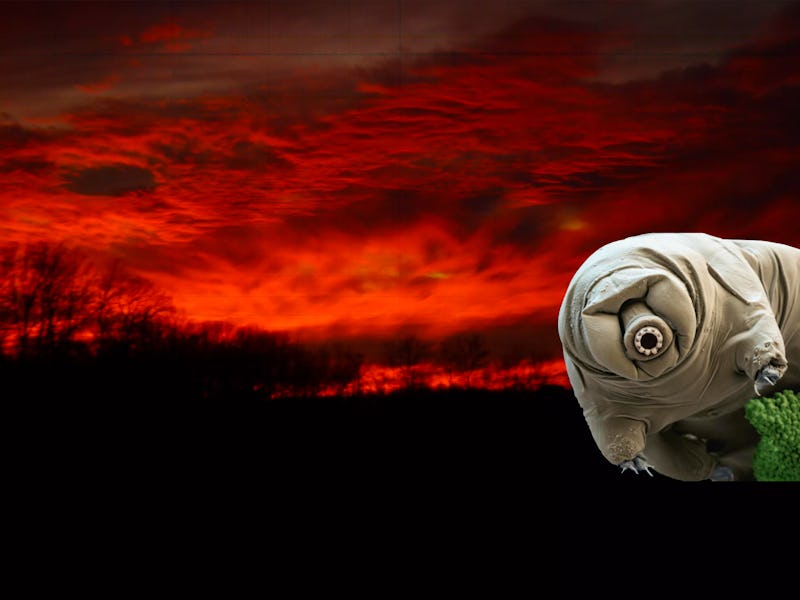This Creature Will Survive the Apocalypse (Move Over, Cockroach)
They're "as close to indestructible as it gets on Earth."

People often credit cockroaches for their resilience, but they’re not the creatures we should be celebrating. Ever heard of the “tardigrade”? Also known as “water bears,” these eight-legged micro-animals live in the least habitable places on Earth, from Antarctica to the deep sea. Scientists have known for some time that tardigrades are nearly impossible to kill — although they dwell in water, they can be without it for 30 years — but research published Friday in Scientific Reports takes that notion a step further: The species will live through every disaster until the sun itself explodes.
The study, which was conducted by a team from Oxford University, examined a series of apocalyptic catastrophes and evaluated whether or not this creature could survive them. Tardigrades will exist as long as water exists, the researchers reasoned. They analyzed the probabilities of certain disasters, judged that Earth will not experience a calamity in which all its water is boiled off, and therefore concluded that tardigrades will be around until the sun explodes and engulfs our planet.
A tardigrade. Kinda cute, right?
Normal natural disasters that are fatal for humans — volcanoes, tsunamis, and the like — weren’t even considered in the study: This is the mind-blowing endurance of the tardigrade, here; the suggestion that those events could be hazardous is almost insulting. Instead, scientists considered star explosions (both supernovae and gamma ray bursts) and a major asteroid impact.
Supernovae, the expanding balls of gas that form when stars explode, would need to occur no more than 0.14 light-years away from Earth in order to boil away our oceans. Since the nearest star is four light-years from our sun, that’s not going to happen.
Gamma-ray bursts, one of the brightest phenomena in outer space, are also too distant to pose a threat (they’d have to be 40 light-years away or less). These explosions occur when enormous stars collapse or neutron stars collide; they’re even rarer than supernovae, and astronomers have only seen them in distant galaxies.
A tardigrade, magnified 100x.
Astronomers have found a dozen asteroids and dwarf planets (including Vesta and Pluto) that are big enough to evaporate Earth’s water upon impact, but none of these celestial bodies is on a collision course with our planet. Of course, other asteroids may crash into the world and kill humans — they just wouldn’t wipe out the stalwart tardigrades.
“Tardigrades are as close to indestructible as it gets on Earth,” said Dr. Rafael Alves Batista, the study’s co-author, in a press release.
What about beyond Earth?
“The history of Mars indicates that it once had an atmosphere that could have supported life, albeit under extreme conditions,” co-author Professor Abraham Loeb said in the release. “Organisms with similar tolerances to radiation and temperature as tardigrades could survive long-term below the surface in these conditions.”
“In this context there is a real case for looking for life on Mars and in other areas of the solar system in general,” said Dr. Alves Batista said. “If tardigrades are Earth’s most resilient species, who knows what else is out there.”